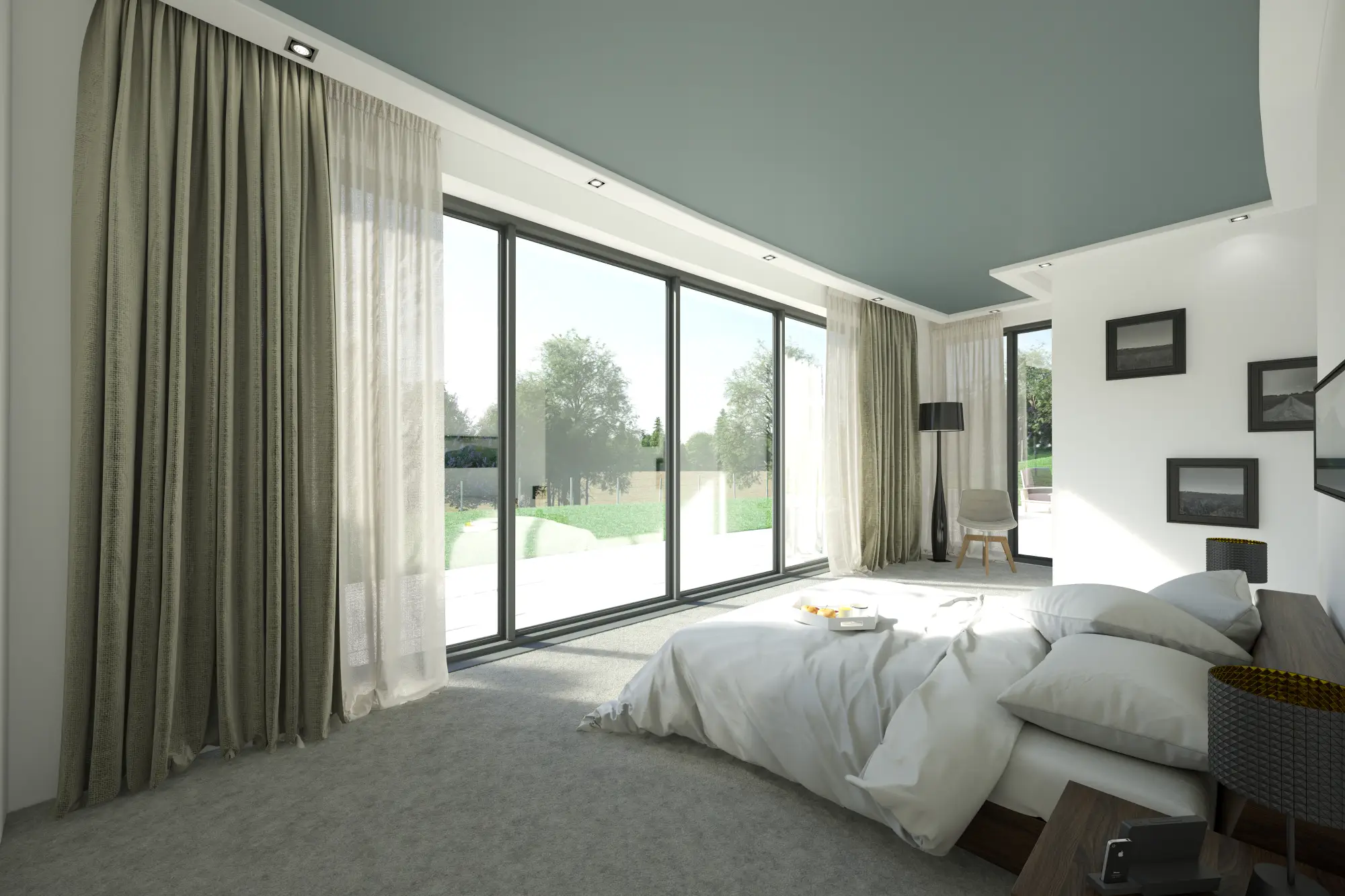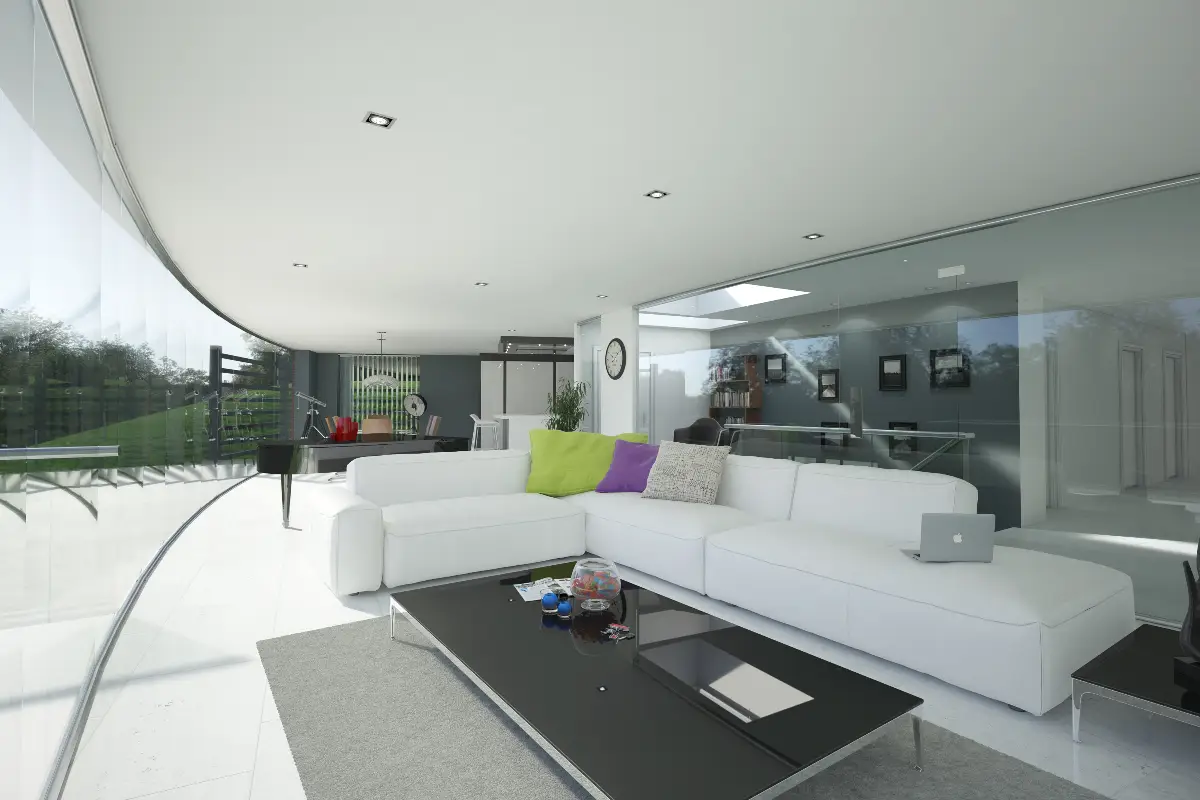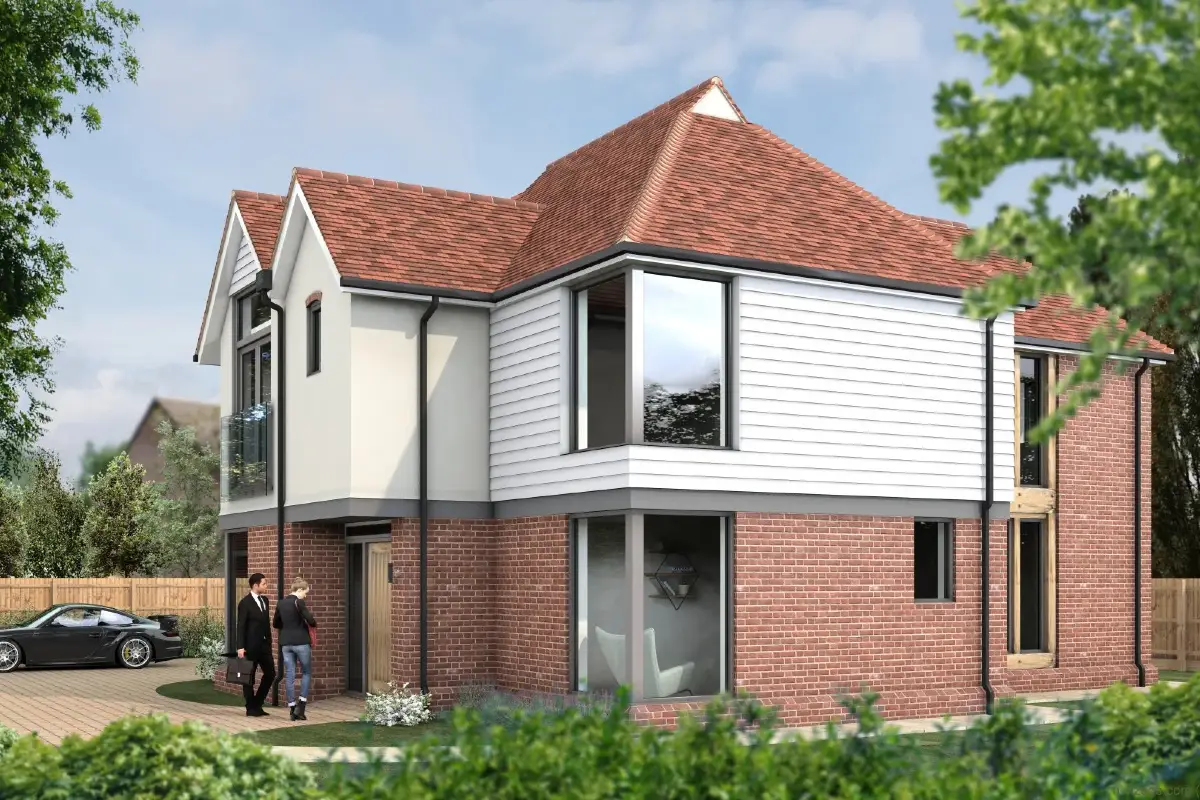How to build a bespoke home with low environmental impact

Designing a low-impact custom home gives you full control over how your living space looks, works, and feels. As you choose each detail - including layout, materials, energy systems, and finishes - you’re creating a home that reflects your taste and values, while meeting your unique needs.
Housing is one of the UK’s largest contributors to carbon emissions, so how you design and build matters. A sustainable approach can significantly reduce your home’s footprint while improving day-to-day comfort and performance.
And with energy costs rising and building regulations becoming stricter, efficient and well-designed properties are becoming more attractive. They cost less to run, need fewer upgrades, and are more likely to hold their value over time.
8 steps to building an energy-efficient custom home
Below, we share eight steps to designing a low-impact bespoke home that balances environmental performance with long-term affordability and ease of construction.
1) Choose the site carefully
Where you build a custom home is just as important as how you build it. Choosing the right site can reduce environmental impact, simplify the planning process, and improve your home’s long-term performance.
Prioritise brownfield sites, infill plots, or edge-of-settlement locations over untouched greenfield land. These help preserve natural ecosystems and often come with existing infrastructure, reducing the need for new roads, drainage, or utility connections. They’re also more likely to gain support from planning authorities, especially if your proposal aligns with local sustainability goals.
Think about biodiversity from the outset. Avoid sites where development would require removing mature trees, hedgerows, ponds, or other natural features. These often support a wide range of wildlife and play a role in local ecosystems.
Aim for a location within walking or cycling distance of local services, schools, or public transport. Reducing your reliance on car travel is important in lowering your home’s lifetime emissions.
Check your local development or neighbourhood plan. You might find sites that are already set aside for sustainable or self-build housing.
Before committing to a plot, commission a detailed site analysis to assess sun orientation, wind exposure, and natural drainage. A well-positioned home can maximise passive solar gain, improve natural ventilation, and reduce the risk of flooding.
2) Design for energy efficiency
Maximising energy and water efficiency can cut emissions, reduce running costs, and create a more comfortable and resilient energy-efficient home.
Start with orientation. Position main living areas to face south to take advantage of winter sun and maximise natural warmth and daylight. Since north-facing spaces receive soft, diffuse daylight, they’re ideal for home offices, studios, or occasional-use rooms.
To prevent overheating through east- and west-facing glazing, consider incorporating roof overhangs, deep eaves, pergolas, or horizontal louvres. These shading elements reduce unwanted solar gain while adding character to the building.
Take a fabric-first approach. Prioritise insulation, airtightness, and high-performance windows and doors, such as triple glazing, to reduce heat loss.
3) Plan for longevity and flexibility
Create spaces that can evolve with changing life stages, family needs, or accessibility requirements. Features like multi-use open-plan areas, wide doorways, level thresholds, and sliding or pocket doors can make a home more flexible, reducing the need for costly alterations.
Consider future upgrades such as battery storage, electric vehicle charging, or alternative heating systems. Including additional service routes, conduits, and access points now can make these changes simpler and more cost-effective later.
Choose sustainable, robust, and easy-to-maintain materials, detailing, and finishes. While all materials will eventually wear, selecting options that are easy to repair or replace, like timber cladding over cement render, helps extend the life of the building fabric and reduces environmental impact in the long term.
4) Choose sustainable building materials
Avoid high-carbon materials where possible. Concrete is one of the most carbon-intensive building materials, but with the right design, you can avoid using it. For example, you can build foundations using screw piles or compacted crushed stone paired with breathable recycled glass slabs.
Consider low-impact structural systems. Timber frames, Structural Insulated Panels (SIPs), and hempcrete are all strong alternatives to conventional blockwork.
Prioritise local, renewable, and low-carbon materials. UK-grown timber, clay bricks, cork, bamboo, and locally quarried stone have lower embodied carbon. For insulation, opt for natural options like sheep's wool, wood fibre, or cork. These materials are breathable, recyclable, and help regulate moisture, reducing the risk of damp and mould.
Reuse and reclaim where you can. Salvaged bricks, reclaimed timber or steel, and other recycled elements can significantly reduce waste while adding texture and character to your energy-efficient home. Check local building sites, reclamation yards, and community platforms like Facebook Marketplace or neighbourhood groups. Many materials get discarded despite being perfectly usable.
Don’t overlook the finishes. Choose low-VOC paints, breathable natural renders, and clay plasters to create a healthy indoor environment. These finishes absorb and release moisture throughout the day, helping maintain stable humidity levels, which can improve indoor air quality.
5) Use eco-building practices
Reduce waste and protect air quality by:
- Simplifying the building’s form and structure; for example, use a grid or modular layout and use standard dimensions to avoid awkward joins, bespoke elements, and excessive scaffolding, and reduce off-cuts
- Using prefabricated elements to streamline the build, reduce packaging, and minimise site waste
- Minimising ground disturbance to cut emissions and preserve soil health; work with the site’s topography and use shallow foundations if the ground is stable, firm, and well-drained.
6) Layer in sustainable features and finishes
Once the core structure and systems for your self-build home are in place, you can enhance your home’s performance and comfort with thoughtful, sustainable features and finishes.
Low-carbon energy systems such as solar panels, air or ground source heat pumps, battery storage, and EV charging points can significantly reduce your reliance on fossil fuels and future-proof your energy use.
Water-saving fixtures and systems, such as low-flow taps and showers, dual-flush toilets, rainwater harvesting systems, and greywater recycling systems, help reduce demand for mains water and lower your home’s overall consumption.
Green roofs provide extra insulation, help absorb rainwater, and support local wildlife. They work well with homes with flat or gently sloped roofs. Brown roofs mimic ground conditions, letting wild plants grow naturally and creating habitats for insects and other wildlife. They’re well-suited to urban or industrial areas that would benefit from more green space and biodiversity. Blue roofs hold rainwater and release it slowly, helping to reduce demand on stormwater systems. These are ideal in dense urban environments with limited outdoor space and heavy rainfall.
Smart home systems allow you to adapt lighting, heating, and appliances to your routine, boosting efficiency without compromising convenience.
Eco-conscious finishes, such as natural flooring materials, thermal curtains and blinds, and low-VOC paints and adhesives, improve energy efficiency and comfort.
Finally, choosing sustainable furniture reduces your interiors’ environmental impact. Opt for FSC-certified timber, upcycled or recycled furniture, and ethically sourced textiles.
7) Eco-friendly landscaping
Your outdoor space plays a vital role in your home's overall sustainability. With the right approach, landscaping can support biodiversity, manage water more effectively, and improve energy performance.
Avoid impermeable surfaces. Use gravel, permeable pavers, or swales to allow water to soak into the ground and reduce surface runoff; this is especially important in areas prone to flooding.
Rethink the traditional lawn. High-maintenance grass areas require frequent watering, mowing, and fertilisers. Opt for more diverse, low-input landscapes that support wildlife and require less upkeep.
Protect and enhance biodiversity with native planting, wildflower meadows, and wildlife-friendly features like hedgerows, ponds, log piles, or insect hotels. Even small additions can create valuable habitats and support local ecosystems.
Plan for climate resilience by choosing drought-tolerant or flood-resistant plants suited to your soil and local conditions. A well-adapted planting scheme can thrive with minimal maintenance.
Use vegetation to regulate the microclimate. Trees, shrubs, and climbing plants can provide summer shade, act as windbreaks, and cool the air around your self-build home, reducing reliance on mechanical systems.
In urban or compact sites, vertical gardens and green walls can help improve air quality, reduce the heat island effect, and add an extra insulation layer to exposed walls.
To reduce water use, install a drip irrigation system that targets plant roots directly and operates efficiently, even in dry conditions.
Bear in mind that, while self-build homes are currently exempt, most developments have a Biodiversity Net Gain (BNG) requirement: they need to deliver at least a 10% increase in biodiversity. Even if not required, taking steps to enhance local habitats can strengthen your planning application.
8) Choose the right professionals
Building an energy-efficient home starts with assembling the right team.
Work with an architect who understands passive house principles and low-energy design. They’ll integrate sustainability into every part of the project, incorporating it into the orientation, layout, materials, systems, and detailing.
Once your design is finalised, appoint a builder with experience in low-impact construction who understands the importance of airtightness, insulation detailing, and moisture control. If your chosen builder is less familiar with sustainable methods, consider keeping the architect involved to oversee the build.
At Taylor Roberts, we specialise in helping people design and build eco-conscious, bespoke homes that reflect their values, maximise energy efficiency, and stand the test of time.
We guide self-builders and homeowners across Kent and the South East through every stage of the process, from early feasibility studies and concept visuals to full architectural design.
Call us on 01227 457 545 or email us on enquiries@taylorroberts.co.uk to discuss your project.
Contact our team today for expert property advice - book now for free.

Architectural Insights
Insights, updates and ideas from the studio - here’s what we’ve been writing about lately.


